How to Buy the Right Golf Cart Batteries
Batteries are the heart of golf carts – and if yours slows to a crawl or fails, it’s game over.
The wrong batteries are more likely to fail early, leave you walking back, and cost a fortune in early replacement and lost cart rentals.
Meanwhile, the right batteries give you or your customers more time on the green, low-to-no maintenance, longer life, and greater ROI.
Here’s how to select the right golf cart batteries – for better reliability, value, and lifespan:
First, start with the basics: What golf cart do you have?
Your golf cart will determine the voltage, BCI group/size, and capacity (Ampere-hours) you need. You can find this information in your user’s manual -- or by searching for the make and model of your golf cart. (Your battery dealer can also help.)
Capacity (how much energy batteries store) varies from one battery to the next. And your battery needs will be different if you’re golfing nine holes occasionally, rather than renting golf carts that see 36 holes a day. (In either case, you’ll want to charge your golf cart at every opportunity.)
Second, there’s no “perfect” golf cart battery. But you can select the right chemistry for you.
Lead-acid batteries are the most popular due to their reliability, easy installation, and power density. They're typically 50%-90% less expensive than other batteries per kWh.
Field-tested and improved in laboratories for more than 100 years, modern lead-acid batteries are created using 3D modeling, robotic assembly, and aerospace vision systems.
You’ll typically see two types of lead-acid batteries: flooded and absorbent glass mat (AGM).
-
- Flooded batteries offer proven long life and reliability, easy maintenance, and (usually) the best return on investment. They require ventilation.
- AGM batteries were first used in military aircraft for their safety and maintenance-free reliability. They eliminate watering and other standard maintenance. They also can accept charge faster than flooded batteries, with higher current delivery. Often, AGM batteries save enough time and money on maintenance to make up for the higher manufacturing costs.
Lithium-ion batteries feature the highest power density, but they cost up to 10X more than lead-acid batteries per kWh. Like AGM batteries, li-ion models do not require regular maintenance. They often have a shorter lifespan than lead-acid batteries and have been available in large format since 2007.
Li-ion's high power density is a double-edged sword; it reduces weight but comes with a greater risk of thermal runaway and fires. That's why Li-ion batteries require a battery management system (BMS) -- to help reduce the likelihood of cell damage, explosions, and fires. (Note: Check whether firefighters in your area have completed special training for li-ion fires. And be aware that li-ion batteries can reignite more than 24 hours after being "extinguished.")
Third, choose a battery manufacturer with advanced R&D, durable design -- and a strong warranty. Here’s what to look for:
Most battery cases look the same, which makes it hard to tell how they’re different.
But inside the battery case, raw materials and automated assembly can profoundly affect your battery experience.
It's easy to put a starting or deep-cycle battery in a green case and slap a picture of a golf course on it.
It’s time-consuming and expensive to invest in R&D, engineering, manufacturing, and testing -- to optimize batteries for the golf course.
Some companies are hoping you won’t notice what’s missing inside your battery.
For instance, golf batteries are subjected to heavy vibrations that many other applications don’t experience.
(Quick explanation: Battery “plates” are metal grids. These grids’ lattices hold “active material” -- the paste that stores energy.)
A lesser battery might use cheaper grids (which store energy) that are thinner and improperly wrapped up. In this case, the grids will gradually break off from the routine vibrations of driving around the golf course.
And a lesser manufacturer might covertly outsource everything -- from R&D and raw material sourcing to manufacturing, quality control, warranty claims, even tech support.
Here’s how Crown’s battery engineers protect you from common problems -- and build longer life and enhanced reliability into your battery:
-
- Crown Battery’s reliability starts with 3D R&D and manufacturing in Ohio, USA. We design and manufacture every golf cart battery at our ISO 9001:2015-certified headquarters.
- We use the most recycled lead per Ampere hour (Ah) in the industry for longer life. More raw material = More chemical reactions = More cycles.
- The industry’s thickest plates withstand heavy vibrations on the course -- and protect against the #1 battery failure (internal short-circuiting caused by plate corrosion).
- Gravity-casting floats plate impurities to the top for removal. (Cheaper “stamping” embeds impurities -- and compromises lifespan.)
- Cast-On-Strap (COS) welding offers 100X the precision of manual welding.
- Robotically wrapped separators protect plates and improve vibration resistance. This maximizes longevity, uptime, and durability. (Crown Battery uses both vertical and horizontal mat wraps to guard against plate-to-plate contact and mossing.)
- Automated heavy-load, pressure-testing, short-testing, and leak-testing machines ensure durability.
Fourth, check out whether switching to a smart/high-frequency charger makes sense.
Smart (aka “opportunity”) and high-frequency chargers use computers to monitor battery’s vitals (state of charge, overall health, battery and ambient temperatures, etc.).
These chargers often deliver a short payback period and high ROI because they:
-
- Reduce charging costs (by avoiding overcharging)
- Enhance capacity (by mitigating overcharging)
- Boost battery life due to temperature-regulated charging
Your dealer can help estimate potential savings from switching to an advanced charger.
Fifth, be sure the manufacturer's warranty protects you.
A warranty is only as good as the company behind it.
Many emerging chemistries have less than a decade of real-world use. And some “older” companies repeatedly file for bankruptcy. Either way, you could be left with the bill if you have battery problems.
So protect yourself -- choose a battery manufacturer with a history of taking care of customers.
For instance, Crown Battery has been in continuous operation since 1926. Multiple generations of top distributors, installers, golf OEMs, and golfers trust our products, service, support, and warranties. And we build batteries for long-term reliability. That makes it less likely you’ll need to use our warranty in the first place.
Finally, recycle your old batteries.
If your old batteries are flooded lead-acid or AGM, then they’re 99.1% recyclable. Just bring them in for recycling when you purchase your new golf cart batteries -- or take them to a recycling center or automotive shop. You’ll find locations at www.earth911.com.
If your old batteries are lithium-ion, then they’re 0%-60% down-cyclable. Visit www.earth911.com for nearby locations to turn in lithium-ion batteries for safer landfilling or partial down-cycling.
Now it’s your turn: If you want more time on the green and more money in your pocket…
Ask your battery specialist which battery is right for you.
Contact us – we’ll help connect you with a battery expert in your area to make sure you get answers and one-on-one help.




